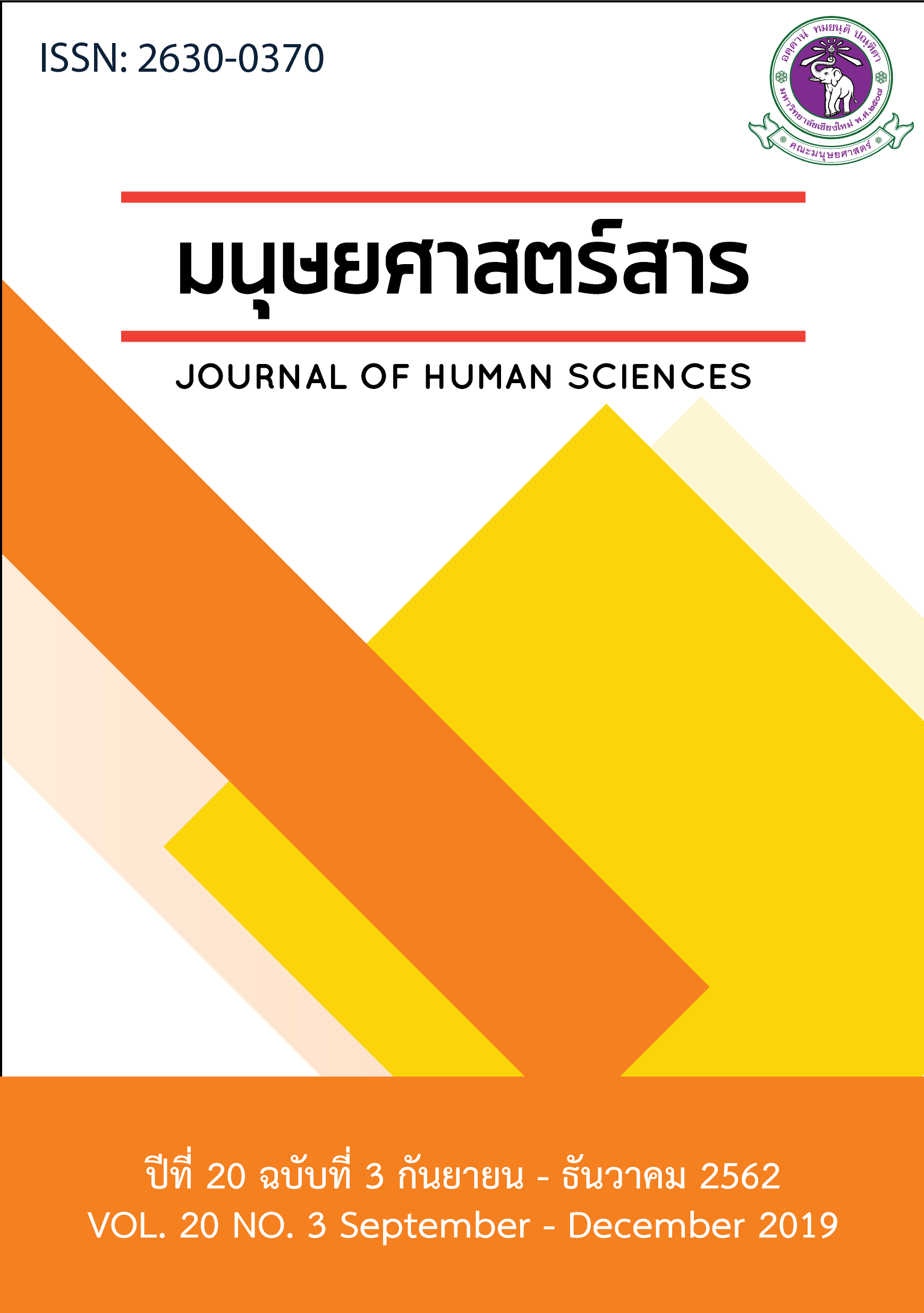ผลการอบรมหลักสูตรจิตบำบัดเด็กสำหรับนักจิตวิทยาในโรงพยาบาลชุมชน
Main Article Content
บทคัดย่อ
การวิจัยนี้มีวัตถุประสงค์เพื่อศึกษาผลของการอบรมหลักสูตรจิตบำบัดเด็กด้านความรู้ เจตคติ และทักษะสำหรับนักจิตวิทยาในโรงพยาบาลชุมชน เลือกกลุ่มตัวอย่างแบบเฉพาะเจาะจง จำนวน 15 คน เครื่องมือที่ใช้ในการวิจัย ได้แก่ หลักสูตรจิตบำบัดเด็กสำหรับนักจิตวิทยาในโรงพยาบาลชุมชน แบบประเมินความรู้ แบบประเมินเจตคติ และแบบสังเกตทักษะในการทำจิตบำบัดเด็ก ทำการประเมิน 3 ระยะ คือ ก่อนการอบรม หลังการอบรม และหลังการอบรม 3 เดือน วิเคราะห์ข้อมูลโดยใช้ การทดสอบวิลคอกซัน แบบอันดับที่มีเครื่องหมาย และการวิเคราะห์ความแปรปรวนทางเดียวแบบวัดซ้ำ ผลการวิจัยพบว่า กลุ่มตัวอย่างมีความรู้ เจตคติ และทักษะในการทำจิตบำบัดในเด็ก จากการประเมินตนเอง หลังการอบรมสูงขึ้นอย่างมีนัยสำคัญทางสถิติที่ .01 และเมื่อติดตามผลเฉพาะด้านทักษะหลังการอบรม 3 เดือน พบว่ากลุ่มตัวอย่างมีคะแนนด้านทักษะในการทำจิตบำบัดเด็ก จากการประเมินของผู้วิจัยสูงขึ้นกว่าก่อนการอบรมและหลังการอบรมอย่างมีนัยสำคัญทางสถิติที่ .01
Article Details
References
Bohman, B., Forsberg, L., Ghaderi, F. & Rasmussen, F. (2013). An evaluation of training in Motivational Interviewing for nurses in child health services. Behavioural and Cognitive Psychotherapy, 41. 329-343.
Boonwiwat, P. (2015). Prasitthiphon khong kanchai prokræm kan oprom chœng patibatkan kan pongkan kan tang khan wairun samrap asasamak satharanasuk changwat samut sakon [Effectiveness of the Workshop Program on Teenage Pregnancy Prevention for Public Health Volunteers]. Journal of Health Science, 24(1). 23-31.
Dettmer, P. (2006). New Blooms in established fields: four domains of learning and doing. Roper Review, 28(2). 70-78.
Greenspan, S. I. (1998). The child with Special Needs: encouraging intellectual and emotional growth. United States: Addison-Wesley.
Hanprasitkam, K., Patoomwan, A., Churaitatsanee, S. & Paisansuthideth, U. (2013). phon khong khrongkan oprom kandulæ phupuai raya sutthai to khwamru thatsanakhati læ kanpatibatkan dulæ phupuai raya sutthai khong phayaban [The Effect of an End-of-Life Care Education Program on Nurses’ Knowledge, Attitude, and Practice in Caring for End-of-Life Patients]. Ramathibodi Nursing Journal, 17(1). 126-140.
Junla, D., Kaewhiran, S. & Yotanyamaneewong, S. (2013). A pilot study of the impact on DIR/Floor time intervention towards emotional and social development for children with autistic spectrum disorder (ASD). Journal of Clinical Psychology, 44(1). 27-34.
Kaewboonta, K. & Chiramanee, S. (2014). kanwichai pramœnphon khrongkan fưk oprom chœng patibatkan kan chuai chiwit khan sung nai phuyai samrap phayaban [An Evaluation Research on Training Program in Advanced Cardiovascular Life Support of Adult by Nurse]. Veridian E-Journal. 7(3). 14-29.
Kim, J. M., & Mahoney, G. (2005). The Effects of Relationship Focused Intervention on Korean Parents and Their Young Children with Disabilities. Research in Developmental Disabilities, 26. 117-130.
Liao., S.-T., Hwang., Y.-S., Chen., Y.-J., Lee., P., Chen., S.-J., & Lin., L.-Y. (2014). Home-based DIR/Floortime Intervention Program for Preschool Children with Autism Spectrum Disorders: Preliminary Findings. Physical & Occupational Therapy In Pediatrics, 34(4). 356-367.
Lopet, S. (2011). FactorsRelating to the Role Performance of Village Health Volunteers in the Public Health Scector. Retrieved from http://doi.nrct.go.th//ListDoi/listDetail?Resolve_DOI=10.14457/PBRU.the.2011.53
Mental Health Center 1. (2015). Summary Report of Monitoring and Control Plan at Heath Promotion Schools, Health Promotion Centers and Primary Care Hospitals in Health Region 1. Chiang Mai: Mental Health Center 1.
Miller, W. R., & Mount, K. A. (2001). A small study of training In Motivational Interviewing: does one workshop change clinician and client behavior?. Behavioural and Cognitive Psychotherapy, 29(4). 457-471.
Pajaree, K. (2010). [Handbook of wholistic Autisim]. Bangkok: Pim See.
Pajareya, K. & Nopmaneejumruslers, K. (2011). A pilot randomized controlled trial of DIR/FloortimeTM parent training intervention for pre-school children with autistic spectrum disorders. Autism, 15(5). 563-577.
Pajareya, K. & Nopmaneejumruslers, K. (2012). A one-year prospective follow-up study of a DIR/Floortime parent training intervention for pre-school children with autistic spectrum disorders. Journal of Medical Association of Thailand, 95(9). 1184-1193.
Psychology Department, Suanprung Psychiatric Hospital. (2015). Psychologist in Northern Part Community. Chiang Mai: Suanprung Psychiatric Hospital.
Psychology Department, Rajanagarindra Institute of Child Development. (2015). Basic Child Psychotherapy for Psychologists in Primary Care Hospital Using Greenspan/Floortime Approach. Chiang Mai: Rajanagarindra Institute of Child Development.
Pusapanich, P. (2002). Psychology of Training. Chiang Mai: Department of Psychology, Chiang Mai University.
Rajanagarindra Institute of Child Development. (2014). 2013 Annual Report. Chiang Mai: Rajanagarindra Institute of Child Development.
Rinjun, N. & Rotjanalert, N. (2015). kan fuk oprom phupokkhrong phua fuk thaksa kandulae chuailưa toneng nai kan patibat kitchawat pracham wan dek othittik [Training parents to train their autistic children in daily routine activities]. Veridian E-Journal. 8(2). 1765-1782.
Sarraf, N., Karahmadi, M., Marasy, M. R., & Azhar, S. M. M. (2011). A Comparative study of the effectiveness of nonattendance and workshop education of primary school teachers on their knowledge, attitude and function towards ADHD students in Isfahan in 2010. Journal of Research in Medical Sciences. 16(9), 1196-1201.
Schwartz, N. E., (1975). Nutritional knowledge, attitude, and practices of high school graduates. Journal of the American Dietetic Association, 66(1). 28-31.
Solomon, R., Necheles, J., Ferch, C., & Bruckman, D. (2007). Pilot Study of a Parent Training Program for Young Children with Autism. Autism, 11(3). 205-224.

